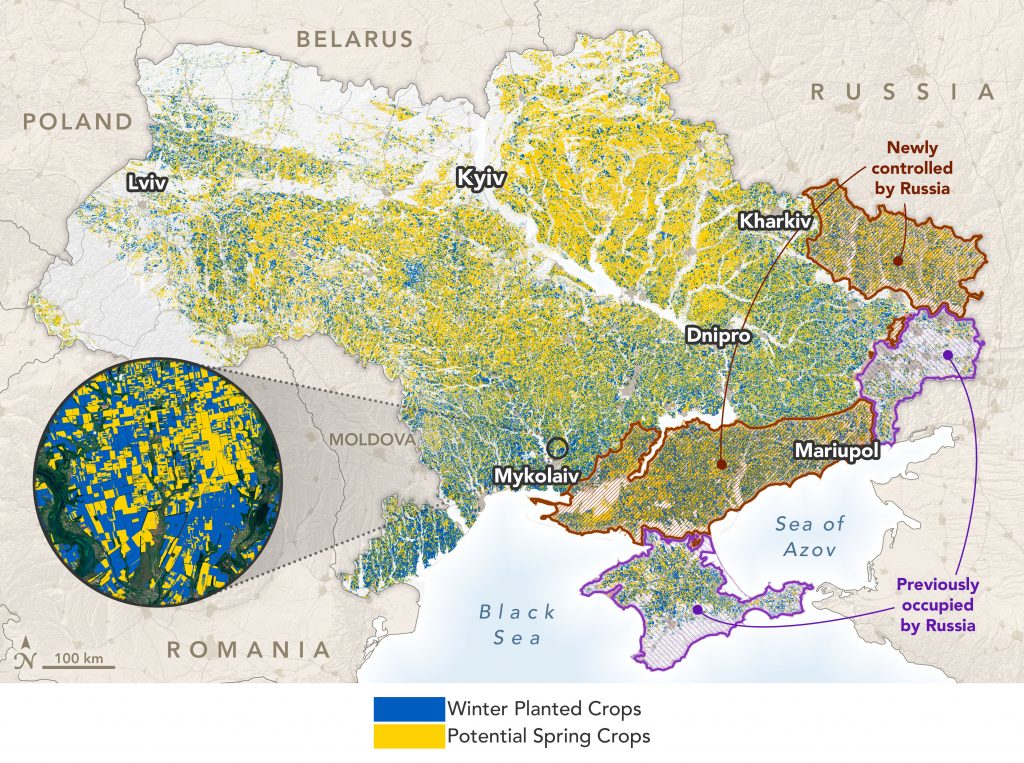Measuring War’s Effect On A Global Breadbasket

Sergii Skakun |
For more than a decade, Becker-Reshef , Sergii Skakun and other NASA-funded scientists have been developing innovative satellite-based techniques to monitor commodity crops such as wheat and maize in Ukraine. The interdisciplinary group collects and analyzes environmental, economic, and social science data in order to improve agriculture-related decision-making around the world. With the arrival of war, such tools could play a key role in anticipating and averting food shortages and famines. The NASA Harvest team, with international partners from the GEO Global Agricultural Monitoring (GEOGLAM) initiative, measure multiple environmental factors—including precipitation, soil moisture, and temperature—to assess the health of crops and anticipate end-of-season yields. “After a slow start in the spring due to dry weather and a cold spell, growing conditions have been mostly favorable and the crops caught up nicely,” Becker-Reshef said. A healthy crop in the ground, however, does not guarantee the crop will be harvested and sent to market. A naval blockade has stopped Ukraine from exporting goods by ship, halting much of the country’s ability to sell grain, explained Sergii Skakun, a NASA and University of Maryland researcher who grew up in Ukraine and spent multiple years with Ukraine’s Space Research Institute. Skakun has been studying how military conflict affected farmers and farmland in the Donbas region of eastern Ukraine since fighting broke out in 2014. “In some areas, unexploded ordnance and mines could make farming impossible in the short term,” Skakun said. “In unoccupied areas, the naval blockade of the ports and soaring fuel prices pose enormous challenges for the upcoming harvests.”
Wednesday, July 6, 2022 |
